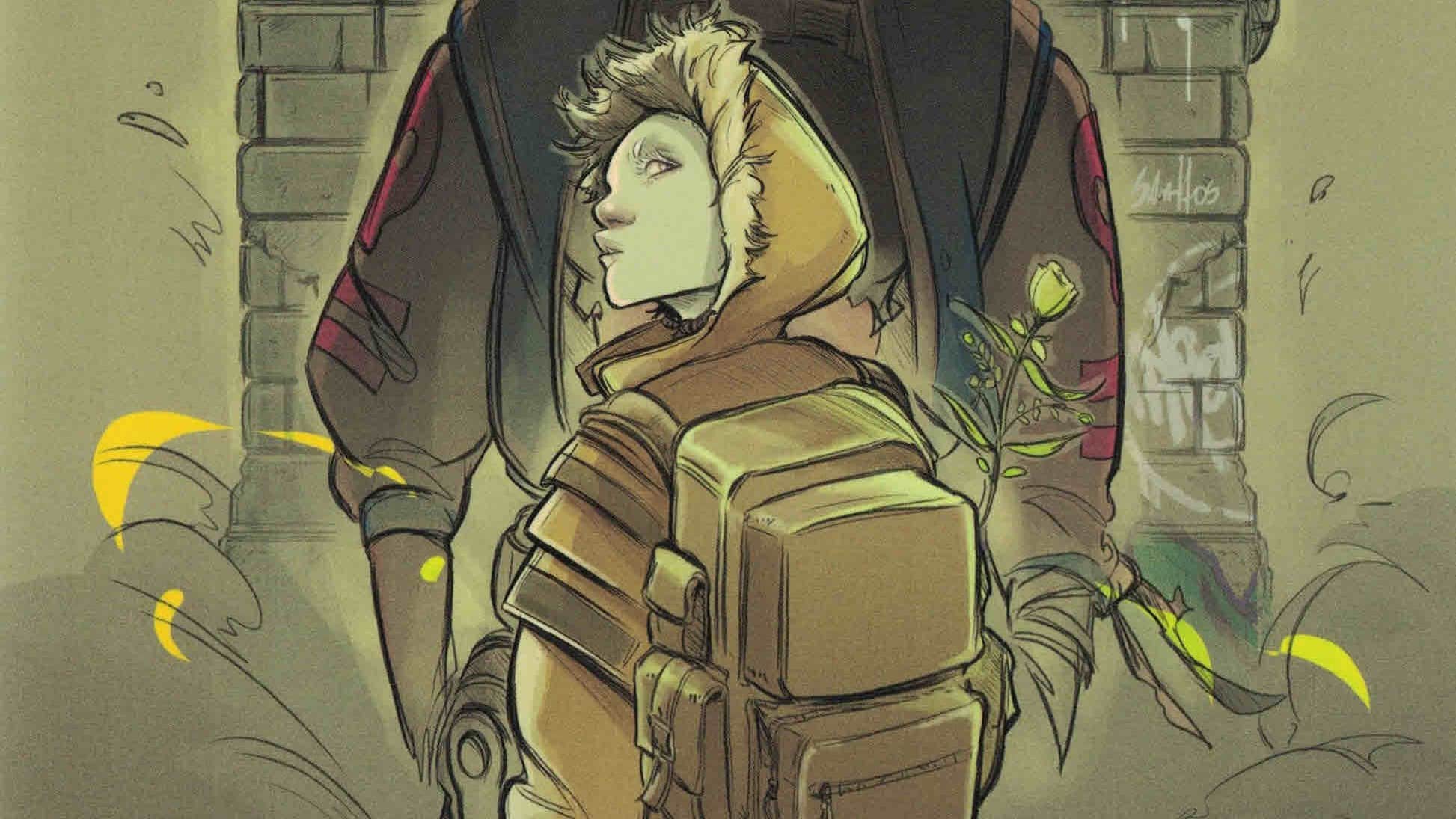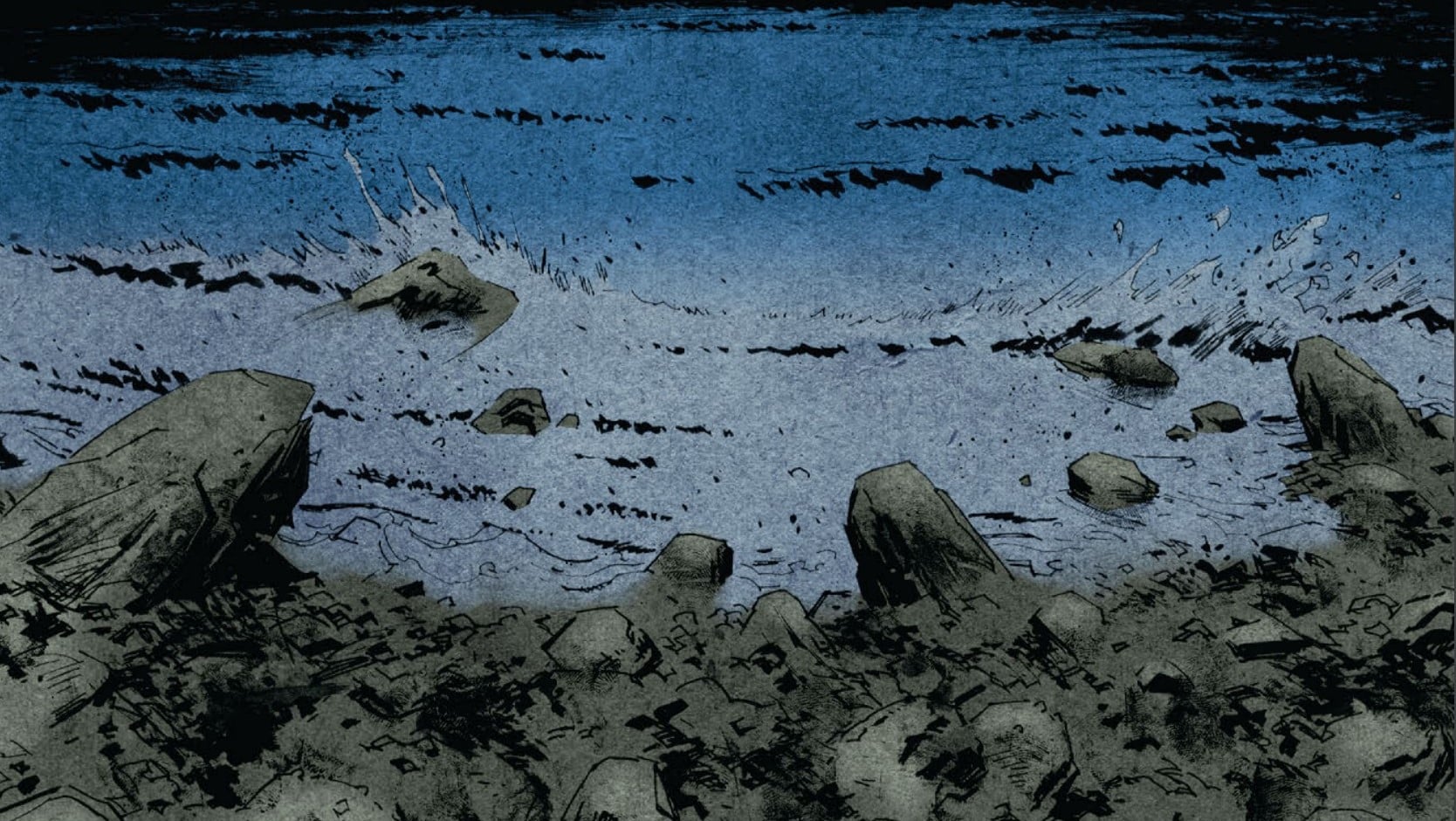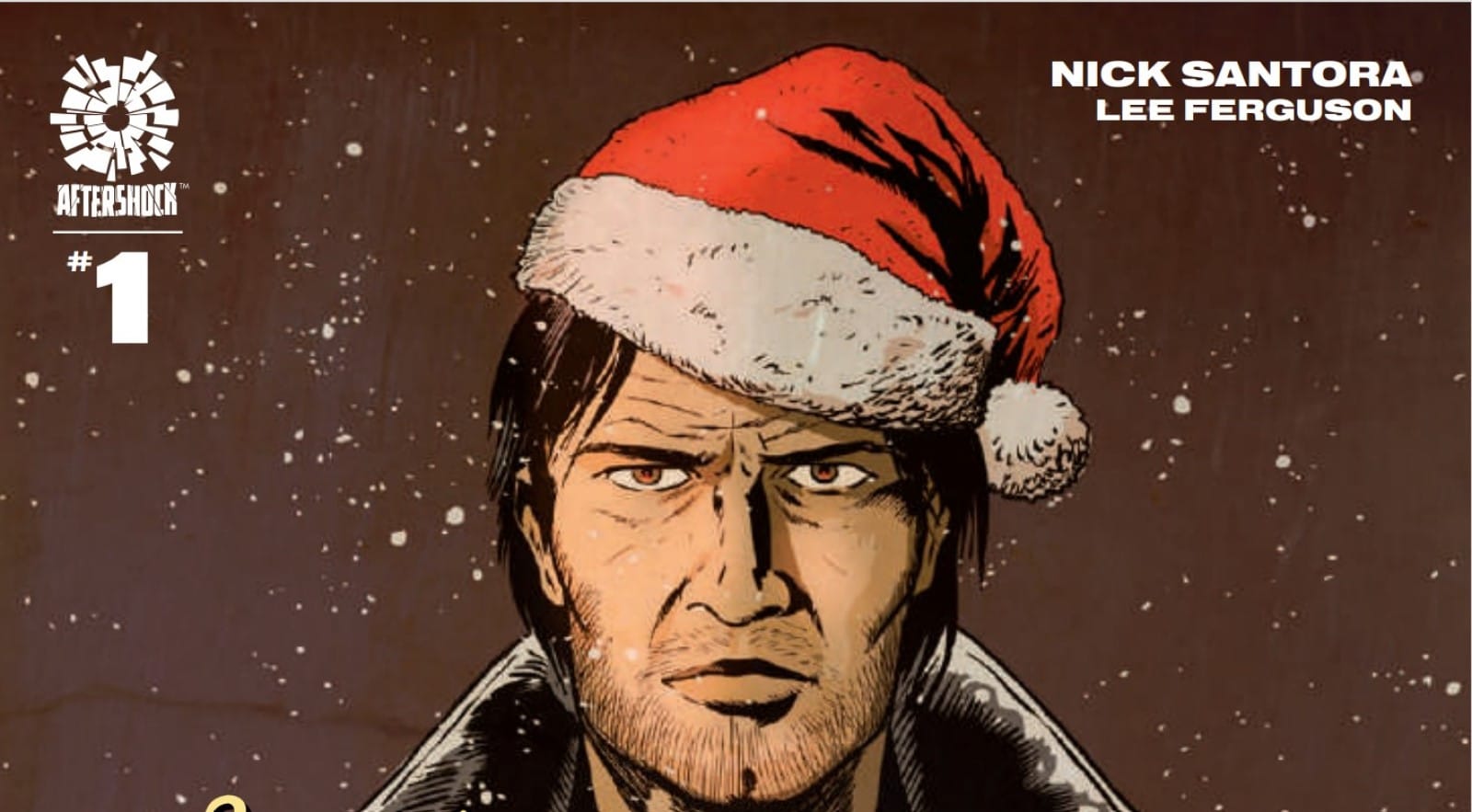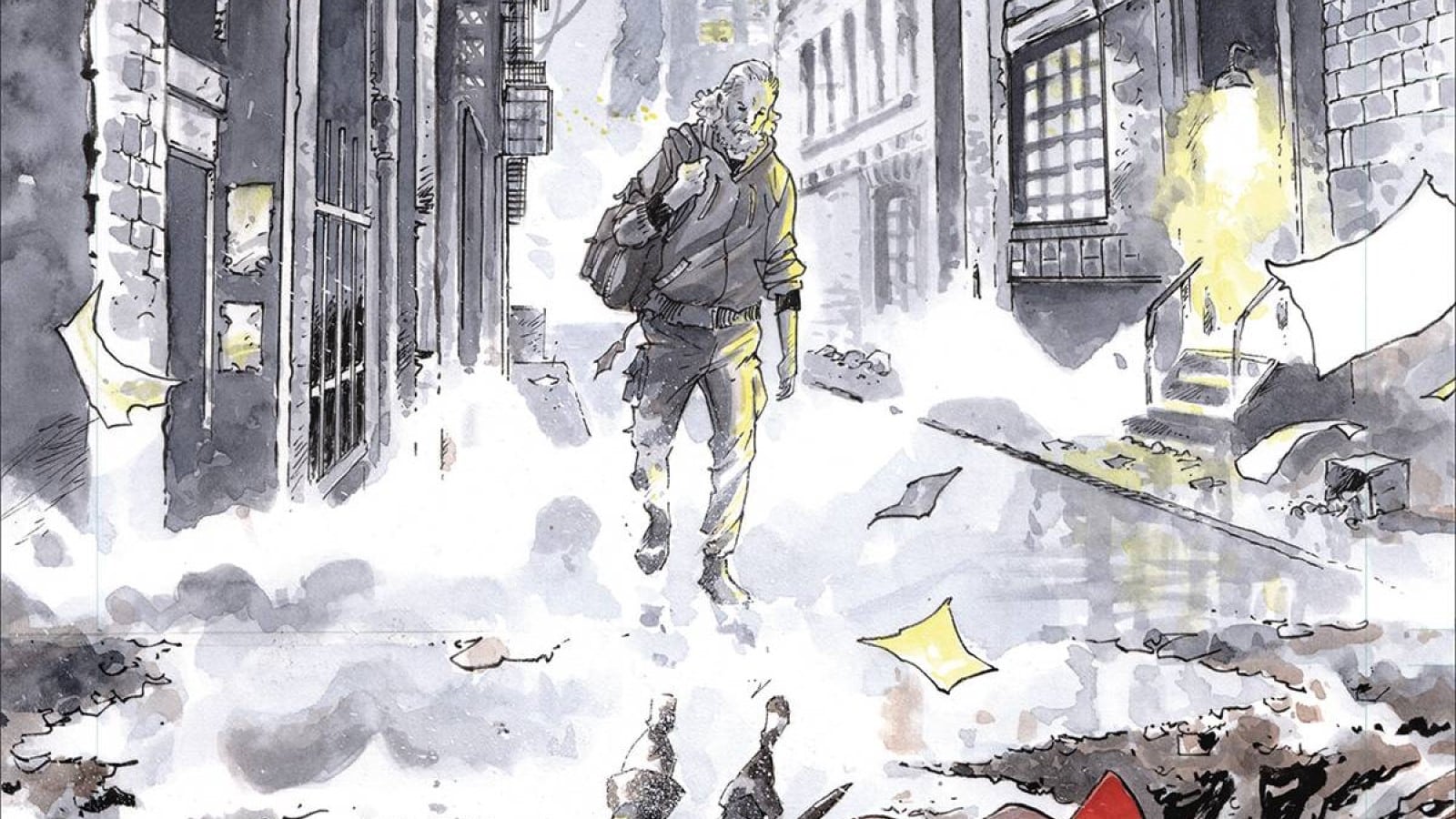It is said that when the world dies, the spirits of the first people will return to witness the last days of humanity. Well, the spirits have arrived, and the end is here. But not everyone has given up hope. Naledi, a teenage girl living in the deserted city once called Johannesburg, has always believed there is a land, hidden away in time, where the gods still live. And where there are gods, there are miracles. Perhaps even miracles that are big enough to save our dying planet. And so, after a lifetime of isolation, Naledi will head out into the unknown with little to hold onto but her faith – and her magical pet plant, Buyo. Written by South African writer and producer Isaac Mogajane (Matwetwe, Catching Feelings), drawn by Brazilian artist Santtos (Night Shift), lettered by Dave Sharpe and published by AfterShock, Land of the Living Gods #1 will introduce you to a world of wonder and cruelty, beauty and perseverance.
Ari Bard: Land of the Living Gods #1 was a welcome surprise this month from AfterShock and an intriguing addition to the “journey of innocents” style of comics. It’s simply one of those comics that you open and immediately notice that it’s refreshingly rooted in something different, even if there’s a level of familiarity to what’s going on. It grows from a largely untapped foundation and breathes new life into the state of comics right now.
Ritesh Babu: Between this, Djeliya from TKO and the recent New Masters launch from Image, there’s a number of creators drawing upon influences and ideas from their African heritage in the direct market. It’s not a ton; in fact, if anything, I’d love to see more, which is also why it feels like watching a beginning of some kind. Like a first wave of sorts, before something much larger arrives. And that promise is very much there when you read Land of the Living Gods. I genuinely was thrilled to see how rooted it was in a reality that read so different and distinct from so much of the more Euro-centric and European-inspired fare that’s damn near everywhere when you talk about genre comics. Like, whether it’s the actual usage of Xhosa or Sotho or other real languages, it’s all legit, and it’s written by an actual South African writer.
It absolutely is a breath of fresh air, for sure.
Ari: Definitely. I’d also like to see a lot more Afro-centric stories and was thoroughly entertained with reading the three you mentioned. I’m glad you mentioned the languages. Different languages in comics are interesting because, despite me understanding the need for readability, I’m a big fan of the added immersion that comes with a lack of translation in the margins. I’m probably in the minority here, but I prefer needing to figure out a word’s meaning from context clues or even having to look it up to all of the little asterisks in the margins.
Ritesh: I get what you mean, and I do feel I’d almost have preferred a sort of glossary of sorts at the end with all the terms explained/laid out, but at the same time I reckon the plurality of languages is likely a pivotal part of the story in a way that it can’t just relegate that stuff to backmatter. Instead you have to have those editorial notes-esque immediate captions translating and explaining what language it’s from on that very page, almost akin to comic-book footnotes. That and just accessibility-wise, it is probably a very reasonable move. I personally really dug it here because I felt like it added to each page and helped give it greater density throughout, while the backmatter diaristic entries did something different. It added to the flavor and experience of it all for me.
Ari Bard: I really enjoyed the flare of the stylistic backmatter. It provided a lot of insight to Naledi’s personality. I like when characters in some of these post-apocalyptic road trip stories are shown feeling moments of joy, even when there isn’t a lot of time for it in the primary narrative. Naledi has a lot of pressure to take care of her mom and find the old Gods, but as the backmatter tells us more about the Buyo and her day-to-day life, we see a side of her we may not see otherwise during this stressful journey.
Ritesh: It absolutely adds character and gives us a sense of Naledi in a way that is additive. I imagine some readers might skip ‘em, and sure, there’s no book-breaking vital deets buried there, but they are fundamentally a touch that brings a reality to this world and its people. Going from the regular stylized comic to those journal notes which feel like real pages plucked out is great.
I want to talk about Santtos’ cartooning here. I’m a big fan of what he manages in sync with Mogajane and Sharpe. That RUN panel could easily just be the running scene with a regular background in a panel. But instead all boxes are removed, it’s on white space, and the action being performed itself becomes a big, beautiful background. It punctuates the whole beat. It’s such a great little perfectly “comics” trick over her. I love it. That has to be one of my favorite pages of the year so far. Too fun.
Ari: Santtos has a big webcomics background, and it’s in moments like the RUN panel where you can see that influence. There are a lot of singular beats and pure comics moments like that which punctuate the story. There’s also a lot of verticality in the layouts. Our eyes are led down the page a lot easier than they are led from left to right. It leads to a style which employs a lot of inventive bits among panels laid out over backgrounds that blend in with the page while also having pages like this.
On one hand, I think it’s a beautiful scene that illustrates the impact of this woman getting pushed off the cliff. On the other hand, I think there are a lot of pages like this where the top right of the page is just … empty. I think if it weren’t so prevalent in this first issue, I wouldn’t notice as much, but it’s worth mentioning, especially when page real estate is often so tricky to master at times, that Santtos’ beginnings as a comic artist equip him with a different set of tools, and also a different set of challenges.
Ritesh: I’m so glad you brought up that page, because that’s another one that really stuck with me. The sense of these people, this girl, against a vast world, which essentially swallows you whole? I felt that, that’s what that page gave me and communicated for me. Big fan.
Ari: Exactly. There are moments of scale and direction that you don’t see too often in traditional mainstream comics which come with their own challenges, sure, but also have their own rewards. Land of the Living Gods #1 is an issue bookended by chase scenes that provide high-octane stakes and a burden of pressure for Naledi all while we learn about parts of South African culture, how she cares for her mom and the importance of her ancestors in the middle of the issue. All that is to say that this is a refreshing comic with both an untraditional visual style and untraditional content. I can’t wait for the next issue.
Ritesh: Absolutely. I cannot wait to see where this goes.







